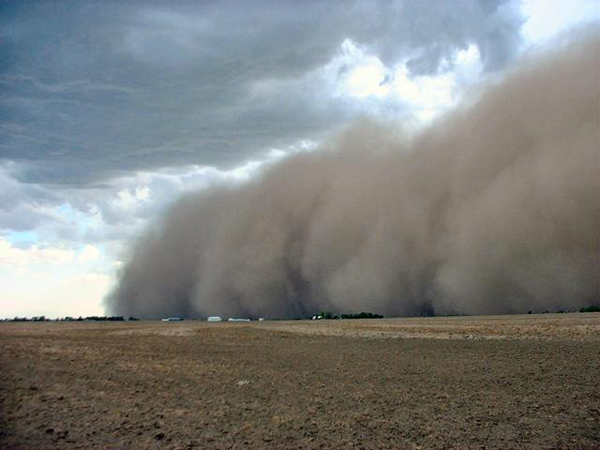American West Is Becoming a Dustier Place

The Old West was an infamously dusty place, the grime a symbol of the gritty frontier. But the West may be even dustier today than it was in the past, thanks to a combination of factors that include droughts, land-use changes and more frequent windstorms, a new study suggests.
All that dust blowing around has implications both for the places that the dust comes from and the places that it lands, because "dust storms cause a large-scale reorganization of nutrients on the surface of the Earth," said study leader Janice Brahney, a doctoral student at the University of Colorado at Boulder when the research was done.
While reports of dust storms from Western residents, along with observations of dust on mountain snowpacks, pointed to a rise in the amount of dust blowing around, "we don't routinely monitor dust in most places, which means we don't have a good handle on how the material is moving, when it's moving and where it's going," Brahney said in a university release on the research.
Counting calcium
To get a better, more quantitative look at just how much dust was blowing around the West, and to see whether that amount might be rising, Brahney and her adviser Jason Neff looked at the amount of calcium deposited by precipitation. Calcium can be whipped up into the atmosphere through power plant emissions, ocean spray and, key to this study, the erosion of soils. It is then washed back down the planet's surface by falling precipitation.
Brahney and the study team looked at calcium deposition data from 175 sites across the country collected by the National Atmospheric Deposition Program between 1994 and 2010. They found that calcium deposition had increased at 116 sites, with the biggest rises found in the Northwest, Midwest and Intermountain West. In particular, Colorado, Wyoming and Utah saw big increases.
The team cross-checked those increases against the potential sources, and found no increases in industrial emissions, ocean spray or forest fires, suggesting that windblown dust was the culprit and was indeed on the rise.
Sign up for the Live Science daily newsletter now
Get the world’s most fascinating discoveries delivered straight to your inbox.
The calcium measurements are likely an underestimate of the dust being blown around too, Brahney said, because some dust is simply blown around by the wind; not all of it collides with water in the atmosphere. And not all dust contains the same amounts of calcium.
Dust impacts
All this dust wafting through Western air has several potential impacts: It can cause declines in air quality; the impoverishment of the soils from which the dust is blown, because the wind picks up the smallest particles, which are the ones that contain the most nutrients; and faster snowpack melt, because dust landing on snow darkens it and causes it to absorb sunlight more quickly.
Neff's lab hopes to get a better picture of dust being blow around by measuring it directly, using specific dust-measuring instruments installed at sites throughout the region, the release noted.
The study, funded by the National Science Foundation, was recently detailed online in the journal Aeolian Research.
Follow Andrea Thompson @AndreaTOAP, Pinterest and Google+. Follow us @livescience, Facebook & Google+. Original article on LiveScience.com.

Andrea Thompson is an associate editor at Scientific American, where she covers sustainability, energy and the environment. Prior to that, she was a senior writer covering climate science at Climate Central and a reporter and editor at Live Science, where she primarily covered Earth science and the environment. She holds a graduate degree in science health and environmental reporting from New York University, as well as a bachelor of science and and masters of science in atmospheric chemistry from the Georgia Institute of Technology.










